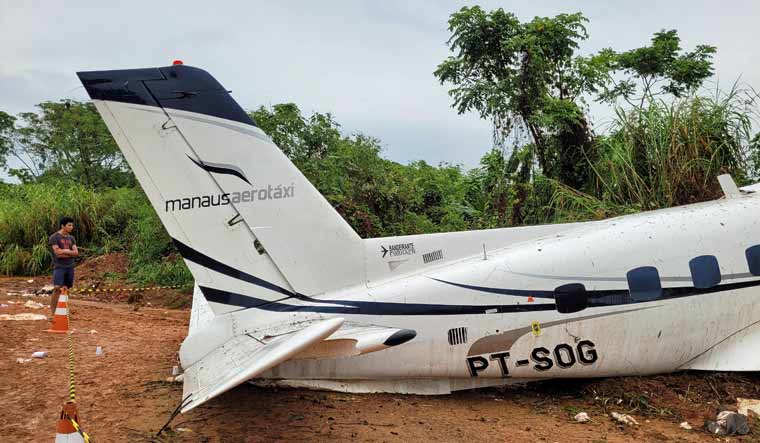History of Plane Crashes in Brazil: Brazil Plane Crash Type

Brazil has a long and unfortunately tragic history of plane crashes. From the early days of aviation to the modern era, the country has witnessed numerous accidents, some of which have had a profound impact on the nation. These incidents have highlighted the need for constant vigilance and improvement in safety measures within the Brazilian aviation industry.
Timeline of Significant Plane Crashes
This section will explore some of the most notable plane crashes in Brazil, providing a glimpse into the history of aviation accidents in the country.
- 1949: Cruzeiro do Sul Flight 163 – A Lockheed Constellation, operating a flight from Rio de Janeiro to Paris, crashed near the Azores Islands, killing all 50 passengers and crew members. This remains the deadliest plane crash in Brazilian history. The crash was attributed to a fire in the cargo hold, which spread quickly and engulfed the aircraft. This tragedy led to the adoption of stricter safety regulations regarding cargo handling and fire prevention in aircraft.
- 1962: Varig Flight 831 – A Lockheed Electra crashed near the São Paulo airport, killing all 30 passengers and crew members. The cause of the crash was determined to be a failure of the aircraft’s control system, which was exacerbated by pilot error. This incident prompted a thorough review of aircraft maintenance and pilot training standards in Brazil.
- 1973: Varig Flight 980 – A Boeing 707, operating a flight from Paris to Rio de Janeiro, crashed in the Amazon rainforest, killing all 135 passengers and crew members. The crash was attributed to a combination of factors, including pilot error, weather conditions, and a possible mechanical malfunction. This event served as a stark reminder of the dangers of flying in remote areas and the importance of meticulous pre-flight inspections.
- 1989: Transbrasil Flight 402 – A Boeing 727 crashed in a mountainous area near the city of Juiz de Fora, killing all 94 passengers and crew members. The crash was attributed to pilot error, with the pilot failing to maintain sufficient altitude during a descent in challenging weather conditions. This incident emphasized the need for effective training and experience for pilots operating in challenging terrain.
- 2006: TAM Airlines Flight 3054 – A Boeing 737-800 crashed while attempting to land at São Paulo’s Congonhas Airport, killing all 189 passengers and crew members. The crash was attributed to a combination of factors, including a lack of runway lighting, pilot error, and weather conditions. This tragedy led to significant changes in aviation safety regulations in Brazil, including the implementation of new runway lighting standards and a review of pilot training programs.
Impact of Plane Crashes on Brazilian Aviation
Plane crashes have had a profound impact on the Brazilian aviation industry. These incidents have resulted in the implementation of stricter safety regulations, improvements in aircraft maintenance practices, and a greater emphasis on pilot training and experience.
- Safety Regulations: Following major accidents, Brazilian aviation authorities have implemented stricter safety regulations. These regulations cover various aspects of aviation, including aircraft maintenance, pilot training, air traffic control, and airport infrastructure.
- Aircraft Maintenance: Plane crashes have highlighted the importance of rigorous aircraft maintenance practices. The Brazilian aviation industry has implemented more stringent maintenance schedules and inspections, as well as invested in advanced technologies to improve aircraft safety.
- Pilot Training: Plane crashes have also led to improvements in pilot training programs. Brazilian aviation authorities have implemented stricter training standards, including more rigorous flight simulations and increased emphasis on emergency procedures.
Factors Contributing to Plane Crashes, Brazil plane crash type
While each plane crash has its unique circumstances, several factors commonly contribute to aviation accidents.
- Weather: Weather conditions, such as storms, fog, and turbulence, can significantly impact aircraft safety. Pilots need to be trained to navigate challenging weather conditions and make informed decisions regarding flight operations.
- Maintenance: Inadequate aircraft maintenance can lead to mechanical failures, which can contribute to accidents. Regular inspections, maintenance schedules, and the use of high-quality parts are crucial for ensuring aircraft safety.
- Pilot Error: Pilot error is a significant factor in many aviation accidents. Factors such as fatigue, distractions, lack of training, and poor decision-making can contribute to accidents.
Brazil plane crash type – The Brazilian plane crash was a tragic event, and it’s easy to get caught up in the details. But, it’s important to remember that these types of incidents can also spark important conversations about safety regulations and air travel security.
These conversations are similar to the ones we see during presidential debates , where candidates often debate policies that impact our daily lives. Ultimately, the Brazilian plane crash, like many other tragedies, reminds us of the need for constant vigilance and improvement in safety standards across all industries.
Brazil has unfortunately seen its fair share of plane crashes, with a variety of causes contributing to these tragic events. One such incident, the flight 2283 crash , highlighted the importance of rigorous safety protocols and maintenance in the aviation industry.
These incidents serve as stark reminders of the need for ongoing improvements to ensure the safety of air travel, both in Brazil and worldwide.
